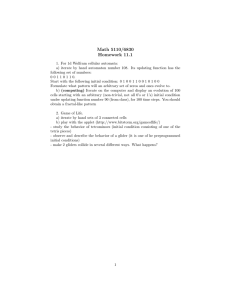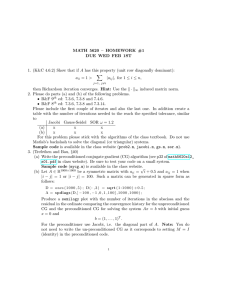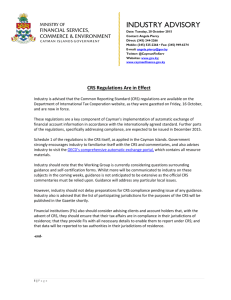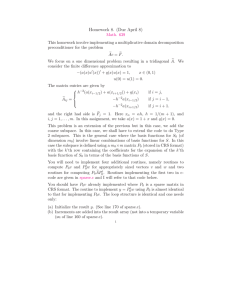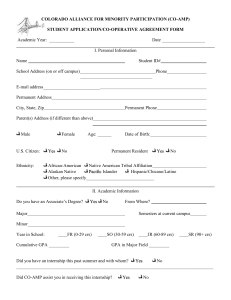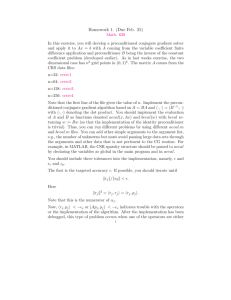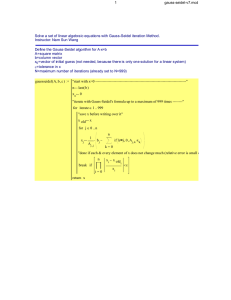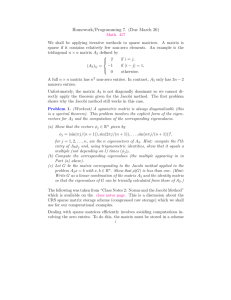Homework/Programming 2. (Due Jan. 28)
advertisement
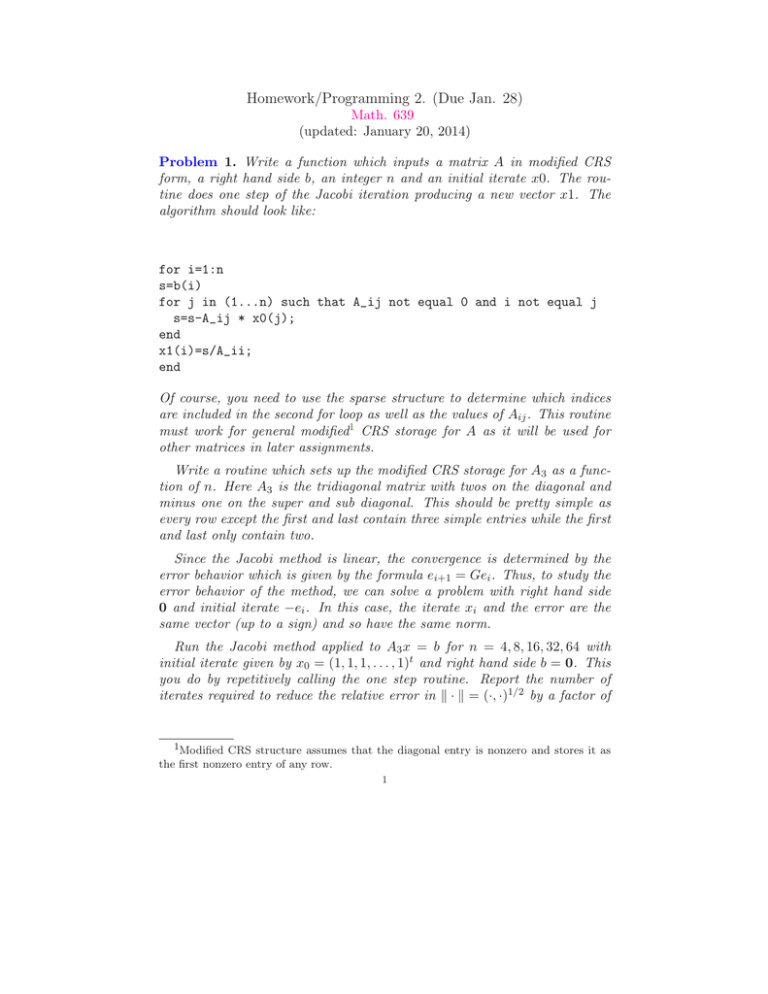
Homework/Programming 2. (Due Jan. 28) Math. 639 (updated: January 20, 2014) Problem 1. Write a function which inputs a matrix A in modified CRS form, a right hand side b, an integer n and an initial iterate x0. The routine does one step of the Jacobi iteration producing a new vector x1. The algorithm should look like: for i=1:n s=b(i) for j in (1...n) such that A_ij not equal 0 and i not equal j s=s-A_ij * x0(j); end x1(i)=s/A_ii; end Of course, you need to use the sparse structure to determine which indices are included in the second for loop as well as the values of Aij . This routine must work for general modified1 CRS storage for A as it will be used for other matrices in later assignments. Write a routine which sets up the modified CRS storage for A3 as a function of n. Here A3 is the tridiagonal matrix with twos on the diagonal and minus one on the super and sub diagonal. This should be pretty simple as every row except the first and last contain three simple entries while the first and last only contain two. Since the Jacobi method is linear, the convergence is determined by the error behavior which is given by the formula ei+1 = Gei . Thus, to study the error behavior of the method, we can solve a problem with right hand side 0 and initial iterate −ei . In this case, the iterate xi and the error are the same vector (up to a sign) and so have the same norm. Run the Jacobi method applied to A3 x = b for n = 4, 8, 16, 32, 64 with initial iterate given by x0 = (1, 1, 1, . . . , 1)t and right hand side b = 0. This you do by repetitively calling the one step routine. Report the number of iterates required to reduce the relative error in k · k = (·, ·)1/2 by a factor of 1Modified CRS structure assumes that the diagonal entry is nonzero and stores it as the first nonzero entry of any row. 1 2 .001, i.e., what is the first iterate k for which kxk k kek k = < .001? ke0 k kx0 k Report the value of k as a function of n.
